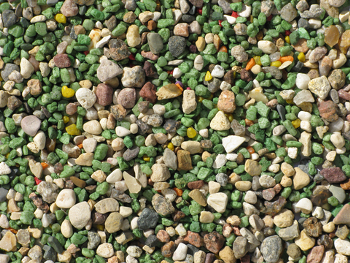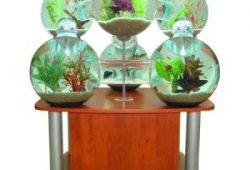Aquarium Substrates
When it comes to Aquarium Substrates there are a few guidelines you might want to consider. If you are putting in an aquarium in your home or office, there are a number of selections you need to create relating to size, equipment, and the kind of ecosystem you want to create. One important decision is the kind of substrate you will use — the material on the underside of the tank, in which you will plant aquatic greenery, coral, and alternative aquatic life. Since the substrate is an important half of your overall ecosystem, you would like to choose the suitable material.

A primary perform of substrate is as an setting for helpful bacteria. These bacteria will perform many functions, such as changing fish waste into natural food for aquatic plants. There are tons of aquarium substrate products available, and several are enhanced with bacteria, minerals, nutrients, and different substances that will facilitate the graceful functioning of your aquarium ecosystem; just make positive that the substrate you decide on is suitable for the surroundings you would like to create.
Primarily, though, a hobbyist will still choose a substrate primarily based on aesthetics. Many enthusiasts take into account darker-coloured substrates to be higher for fish. Fish colors display additional brilliantly with darker substrates, for example, and fish are thought to behave less timidly.
For freshwater aquariums, the most common alternative for substrate is gravel. The gravel ought to not be sharp; it can be as coarse as pea-sized in diameter, or as fine as 1-2 millimeters. If your fish population will include bottom feeders, finer gravel is a better choice. Gravel is obtainable in many colours, and will be sealed to confirm that it does not have an effect on water chemistry; gravel that’s sold specifically for aquariums is chemically inert. The composition of aquarium gravel is typically quartz and alternative lime-free minerals.
Another simple selection for contemporary water is sand. Sand is terribly fine and will compact itself over time; it’s clean, and offered in several varieties, from play sand (which has been sterilized for use by kids) to black Tahitian Moon sand. Fish additionally seem to like sand. There are some disadvantages — as a result of it’s compact, debris will rest on high of sand rather than settle into it, necessitating more frequent cleaning. (And, as a result of most sand is light-weight colored, debris will be plainly visible.) And sand will clog your filter. You cannot use an undergravel filter with a sand substrate. Additionally, if your substrate is only sand, live plants may have issue establishing their roots through this compacted material.
Don’t harvest ocean sand to be used in your aquarium; ocean sand contains too several impurities, the effects of that will be magnified in the closed aquarium environment. Select sandblasting sand (somewhat coarse, mostly composed of quartz), play sand, or some other sand that has been cleaned of impurities.
If you plan to have a variety of plants in your aquarium, remember that your plants can get most of their nutrients through their root systems, which will be implanted in the substrate. Your substrate ought to in all probability incorporates two layers: the underside layer should be nutrient made, or have the capability to store nutrients, and the top layer should stop washout of nutrients and provide a firm anchor for the plants. In such an arrangement, the lower level ought to be as high as the plant roots (1-two inches), and also the top layer concerning a pair of inches in height.
In such a twin-layer substrate, the prime layer could be gravel, or perhaps sand, though create sure that your plants’ root systems do not should grow through any of the sandy top layer. As for the underside layer, vermiculate makes an ideal choice. Vermiculate could be a mixture of aluminum, iron, and magnesium; it is generally heated during processing, rendering the mixture sterile, pH-neutral, and with a high surface area. Vermiculate has a high cation exchange rate: this can be the process through which plants absorb nutrients from soil. Vermiculate also releases potassium and magnesium over a long amount of time, again benefiting your plant life.
As a result of vermiculate tends to compact, it is best mixed with another substrate material, like laterite, to maintain a porous structure. Laterite is porous, weathered clay burned by the sun; it contains high concentrations of iron oxide and tends to hold nutrients in storage till plant root systems absorb the nutrients.
Saltwater aquariums, particularly reef aquariums, have different requirements. A fine-grained sand will be used, though sand isn’t a hospitable environment for bacteria and other microscopic organisms that can profit your saltwater ecosystem. A higher selection would possibly be crushed coral; as calcium carbonate is slowly released from this substrate material, it can promote new growth in any coral formations you have got in your tank, and it conjointly helps maintain the high pH levels needed by saltwater fish. Crushed coral ought to be completely rinsed before laying it in your tank; excessive coral dust can cause your tank water to cloud over.
Another substrate for salt water is aragonite gravel; aragonite is stuffed with helpful bacteria and other organisms, and thus is taken into account a “live” substrate. As with coral, aragonite features a high calcium carbonate content, helping sustain your coral formations and maintaining a proper pH balance in your tank.
There are many selections for an aquarium substrate; however, the kind of aquarium setting you want to create will go an extended approach toward determining the most acceptable substrate choice.



